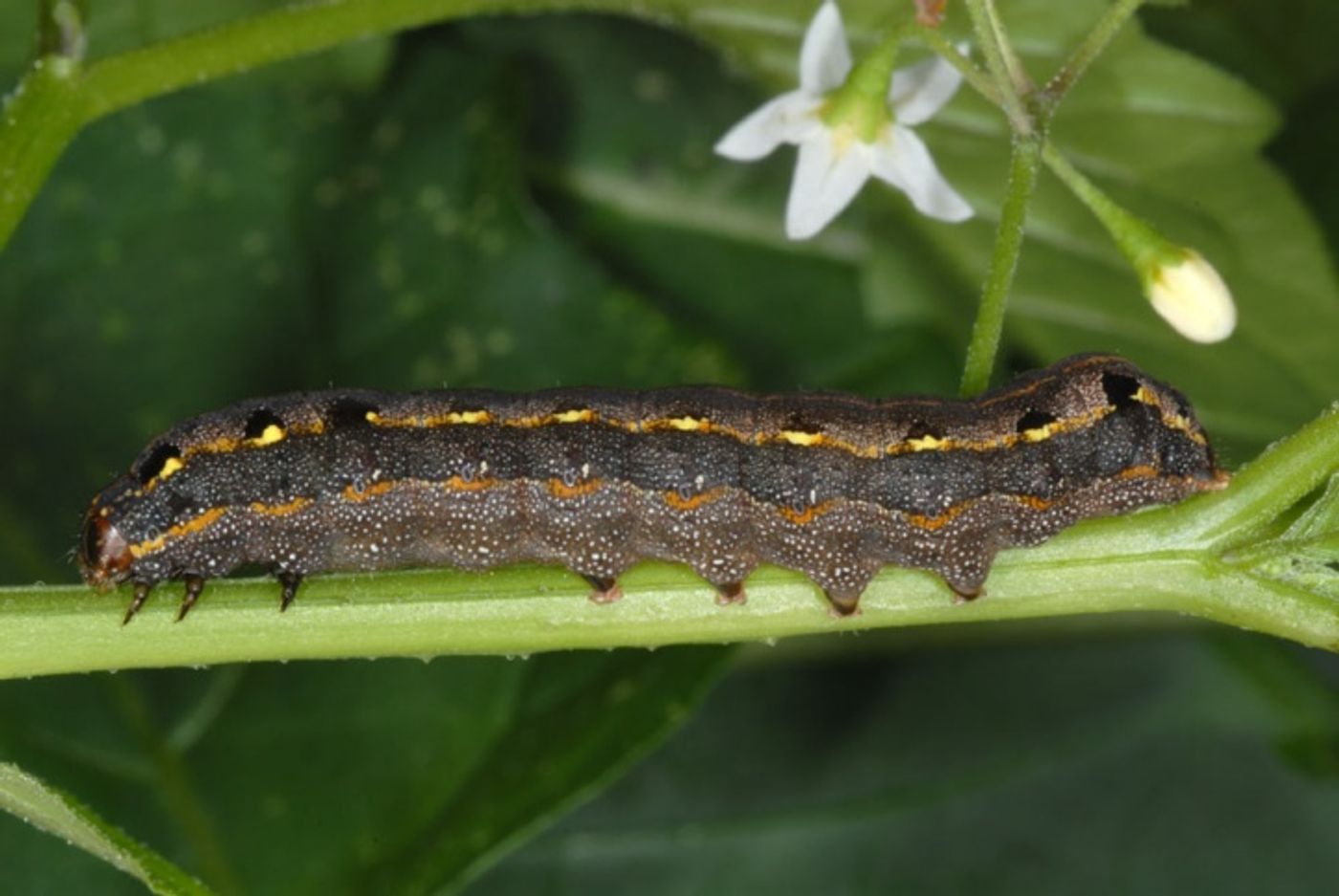Moth gut microbe makes antibiotic
Can insects get infected with bacteria?
Sure they can, but it doesn’t happen all that often. That fact sparked the interest of researchers at Zhejiang University and the Max Planck Institute for Chemical Ecology.
The cotton leafworm, Spodoptera littoralis, is a moth, and its larvae love to munch on plants. Bacteria also hang out on plants, and the larvae inevitably ingest them. The odd thing is that these bacteria don’t seem to make the little larvae sick.
This led Yongqi Shao and Wilhelm Boland to look at the larvae’s gut bacteria - maybe their microbiome was helping to keep them healthy?
They found that the composition of gut bacteria changes as these little insects grow up. Younger larvae have many virulent Enterococcus species in their guts, but older larvae have the nonpathogenic E. mundtii. According to Shao, "we show that the evolutionary success of insects is partially based on a symbiotic association with gut microbes, which co-evolved with their hosts over millions of years."
The group Isolated various species of Enterococcus from the larvae and determined how they competed with each other. What they found was quite surprising - E. mundtii inhibited the growth of other bacteria! How, exactly? They showed that E. mundtii secretes a bacteriocin (an antimicrobial peptide) that they called mundticin KS. Bacteriocins are small proteins made by bacteria to inhibit the growth of other closely related bacteria.
In their first experiment, they showed that something in the E. mundtii culture supernatant (later identified as mundticin KS) was able to inhibit the growth of E. faecalis or E. casseliflavus. It did not inhibit the growth of other E. mundtii cells - it is immune to the mundticin that it produces.
Shao and Boland went on to test if mundticin could cure larvae of a bacterial infection. They purified mundticin and infected the larvae with a high dose of E. faecalis. Sure enough, larvae that had E. mundtii in their guts, that also made mundticin, were cured of the infection.
According to Boland, “the antimicrobial promotes symbiosis by providing a competitive advantage for E. mundtii, contributing to its dominance in the gut microbiome, while protecting the cotton leafworm against pathogens. We expect that protective associations with antibiotic-producing bacteria is a common strategy of insects against microbial invaders."
The next step is to look for similar antimicrobial mechanisms in other insect species. Such systems could be exploited by the agriculture industry to protect crops from pathogens. These peptides could also be useful to human health, where some suggest they could be used as food preservatives.
Source: Cell Chemical Biology, EurekAlert









